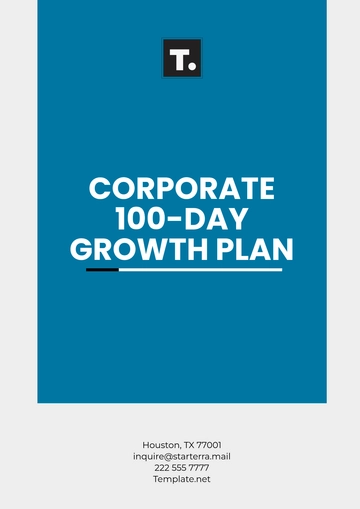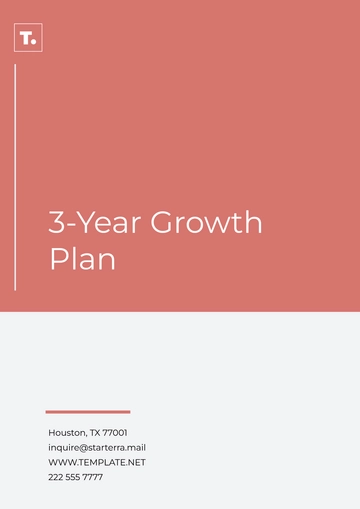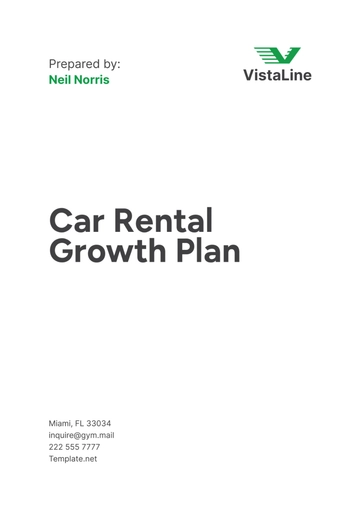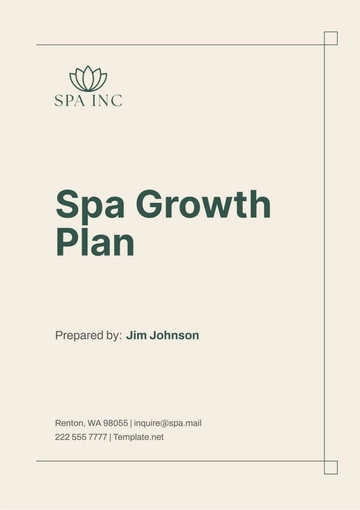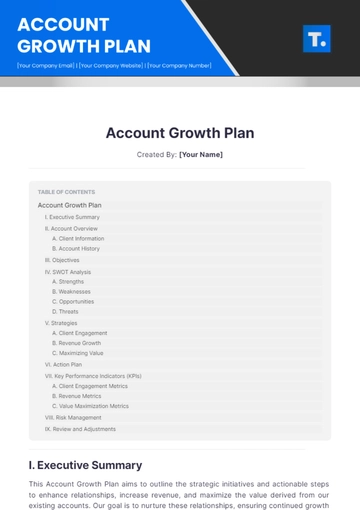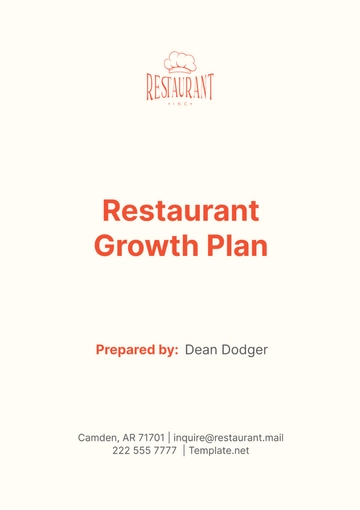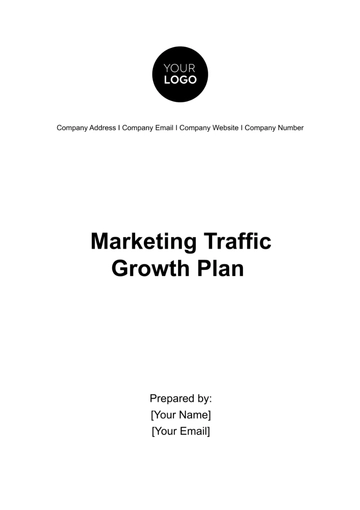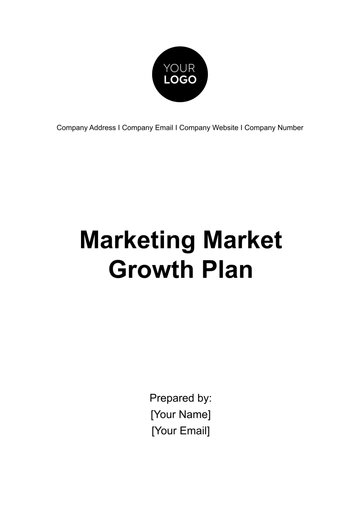Free Marketing Traffic Growth Plan

1. Introduction
In today's interconnected world, the digital realm has become the primary battleground for businesses vying for attention, engagement, and customer loyalty. As the lines between the physical and virtual worlds continue to blur, traffic growth is no longer a mere metric; it's a vital indicator of a brand's health, its resonance with audiences, and its competitive standing in the market. For [Your Company Name], harnessing the potential of the digital space is paramount. Recognizing this imperative, our Traffic Growth Marketing Plan has been meticulously crafted. Drawing from contemporary best practices, technological advancements, and a deep understanding of digital user behavior, this plan isn't just about numbers—it's about building meaningful connections. It’s about transforming fleeting clicks into lasting relationships and turning passive browsers into active brand advocates. With an unwavering focus on enhancing [Your Company Name]'s online footprint, we aim to attract not just larger volumes of visitors but also an audience that's deeply engaged and aligned with the brand's values and offerings. As we chart the course for the next two years, join us on this exciting journey, exploring our comprehensive, data-backed strategies designed for digital excellence and unparalleled growth.
2. Situation Analysis
Every successful journey begins with a clear understanding of one's current position. In the digital realm, this necessitates a keen analysis of existing metrics and a thorough understanding of the competitive landscape. As [Your Company Name] charts its path towards greater digital dominance, our Situation Analysis serves as the foundational bedrock, offering a clear snapshot of where we stand today and shedding light on the gaps and opportunities that lie ahead. Let's delve into the details of our current digital footprint and assess our position
vis-a-vis key competitors.
Metric/Competitor | Description/Value (2050) | Insights |
Monthly Website Visits | [Value Placeholder, e.g., 50,000 visits] | A steady flow of visitors indicates a resonant brand presence. Yet, there's potential for growth targeting untapped audience segments. |
Average Session Duration | [Value Placeholder, e.g., 3 minutes] | The duration underscores the engagement level of our content. An aim to increase this indicates adding more engaging and relevant content. |
Bounce Rate | [Value Placeholder, e.g., 40%] | A lower bounce rate is preferable, suggesting that users find the site's content relevant. Strategies to further reduce this will enhance user retention. |
[Competitor 1] | [Brief description & traffic estimate, e.g., TechGiant – A major tech blog with an estimated 80,000 monthly visits] | TechGiant's higher traffic indicates its strong SEO practices and content strategy. Analyzing their approach can provide insights for improvement. |
[Competitor 2] | [Brief description & traffic estimate, e.g., DigixHub – A rising player with innovative content formats, garnering 45,000 monthly visits] | DigixHub's innovative content approach seems to be attracting a niche audience. Exploring similar innovations can tap into new audience segments. |
Armed with this detailed analysis, [Your Company Name] is better poised to understand its strengths and areas of improvement. Drawing insights from both our current metrics and the competitive landscape ensures that our subsequent strategies are both informed and targeted, setting the stage for a robust Traffic Growth Marketing Plan.
3. Traffic Growth Objectives (2051-2052)
In the quest for digital dominance, setting clear, measurable objectives is paramount. These objectives serve as both our guiding stars and milestones, illuminating the path ahead and providing tangible benchmarks of success. For [Your Company Name], the next two years are not just about scaling our digital presence but doing so with precision, efficiency, and a keen eye on key performance metrics. Let's explore the pivotal objectives that will steer our traffic growth endeavors over the forthcoming period.
Monthly Website Visits Objective: Our primary goal is to magnify our brand's reach and resonance. By 2052, we aim to achieve a [Value Placeholder, e.g., 25]% increase in monthly website visits. This would translate to attracting a larger, diverse audience, effectively broadening our digital footprint. With targeted marketing strategies and enhanced user engagement, we envision [Your Company Name]'s website becoming a go-to hub for [specific industry, e.g., tech enthusiasts].
Objective: Boost monthly website visits from 50,000 (2050) to 62,500 (2052).
Average Session Duration Objective: Engaging content isn't just about drawing users in; it's about keeping them intrigued. By focusing on enhancing content quality and relevance, our objective for 2052 is to augment the average session duration by [Value Placeholder, e.g., 10]%. This underscores our commitment to not just attract but deeply engage our audience, offering them value at every digital touchpoint.
Objective: Increase average session duration from 3 minutes (2050) to 3.3 minutes (2052).
Bounce Rate Objective: A user's decision to stay or leave our site is often a direct reflection of the site's perceived value. By 2052, our ambition is to curate an online experience so compelling that we reduce the bounce rate to below [Value Placeholder, e.g., 35]%. Through intuitive design, relevant content, and swift site performance, we aim to capture and retain our audience's attention.
Objective: Lower the bounce rate from 40% (2050) to below 35% (2052).
In essence, these traffic growth objectives for [Your Company Name] are more than mere numbers. They encapsulate our vision of creating a digital space that is not only visited frequently but is also deeply valued by its audience. Through these benchmarks, we set forth on a journey of continuous improvement, innovation, and growth.
4. Key Performance Indicators (KPIs)
In the intricate world of digital marketing, a ship without a compass can easily lose its way amidst the vast ocean of metrics. This is where Key Performance Indicators (KPIs) step in, serving as our navigational beacons. KPIs are not just numbers; they are the distilled essence of our ambitions, offering a clear, quantifiable snapshot of where we stand and where we aim to reach. For [Your Company Name], monitoring these pivotal indicators ensures that our strategies are on track, our efforts are yielding the desired results, and our goals remain within sight. The following table outlines our critical KPIs, benchmarking our current performance against our aspirations for 2052.
KPI | 2050 Benchmark | 2052 Target |
Monthly Website Visits | [Value Placeholder, e.g., 50,000 visits] | [Value Placeholder, e.g., 62,500 visits] |
Average Session Duration | [Value Placeholder, e.g., 3 minutes] | [Value Placeholder, e.g., 3.3 minutes] |
Bounce Rate | [Value Placeholder, e.g., 40%] | [Value Placeholder, e.g., 35%] |
By consistently gauging our performance against these KPIs, [Your Company Name] ensures that our marketing endeavors are both effective and efficient. They offer insights into our strengths, shed light on areas of improvement, and, most importantly, keep our vision for 2052 clear and actionable. As we navigate the digital landscape, these indicators will be our touchstones, ensuring that every strategy, every campaign, and every piece of content is aligned with our overarching objectives.
5. Target Audience Segmentation
One of the cardinal rules in marketing is understanding that not all audiences are created equal. In the vast digital universe, a one-size-fits-all approach is not just ineffective but also inefficient. For [Your Company Name], the key to unlocking digital success lies in tailoring our strategies to resonate with specific audience segments. Through meticulous research and analysis, we've identified distinct audience segments, each with its unique preferences, behaviors, and digital touchpoints. By understanding these segments, we can craft tailored messages, choose optimal channels, and create content that strikes a chord, ensuring maximum engagement and conversion. Dive into our detailed segmentation below.
Segment | Description | Preferred Channels |
Tech Enthusiasts | Individuals who are passionate about the latest technological trends, gadgets, and innovations. They are always on the lookout for in-depth reviews, news, and expert opinions. | Social Media platforms like Twitter for real-time updates, and niche tech Blogs for detailed analyses. |
Business Professionals | This segment comprises individuals in the corporate world, from executives to managers. They seek insights on industry trends, best practices, and networking opportunities. | LinkedIn for professional networking and thought leadership, and Email Marketing for curated content, webinars, and industry news. |
Students | A younger demographic primarily focused on academic pursuits but also interested in extracurricular and career opportunities. They are tech-savvy and rely heavily on digital platforms for learning and entertainment. | Social Media platforms like Instagram and TikTok for engagement and Educational Platforms like Coursera or Khan Academy for academic resources. |
Through this granular approach to audience segmentation, [Your Company Name] ensures that our digital strategies are not just broadcasted into the void but are directed towards receptive ears. By speaking directly to the interests and needs of these segments, we enhance the probability of engagement, retention, and conversion, driving unparalleled digital success.
6. Traffic Growth Strategies
For [Your Company Name], growth is not a matter of chance but a result of meticulously planned and executed strategies. As we delve into the realm of digital marketing, it's pivotal to understand that traffic growth stems from a multi-faceted approach. Each strategy, from content marketing to SEO, plays a unique role, converging to drive unparalleled results. Let's explore the core strategies that will propel our digital footprint forward.
Content Marketing:
Bi-weekly Blog: Content is the bedrock of digital engagement. By launching a bi-weekly blog, we aim to become a trusted source of information, covering pertinent industry trends and insights. This not only boosts our SEO efforts but also fosters a loyal readership.
Topic: "The Future of [Industry]: Trends to Watch in 2052"Influencer Collaborations: In the age of digital trust, influencers hold significant sway. Collaborating with them for guest posts and webinars allows [Your Company Name] to tap into their vast follower base, enhancing reach and credibility.
Collaboration: Webinar titled "Navigating [Industry] Challenges" featuring [Influencer Name].
Search Engine Optimization (SEO):
Keyword Targeting: By targeting [Value Placeholder, e.g., 50] new high-search-volume keywords, we aim to capture a larger share of organic search traffic, ensuring that our content reaches the eyes of those actively seeking it.
Keyword: "[Industry-specific keyword]"Website Optimization: A swift, mobile-responsive website is no longer a luxury but a necessity. By optimizing our site's speed and ensuring seamless navigation on mobile devices, we enhance user experience, reducing bounce rates and boosting conversions.
Paid Advertising:
PPC Campaigns: Pay-Per-Click campaigns offer immediate visibility. By initiating campaigns targeting our key audience segments, we ensure that our offerings are front and center when potential customers are searching.
Ad: "Discover the Best in [Industry]. Join [Your Company Name] Today!"Retargeting Ads: Not every visitor converts on their first visit. Through retargeting ads, we aim to re-engage past visitors, reminding them of our offerings and enticing them back to our platform.
Social Media Engagement:
Interactive Sessions: Engaging the audience is key to fostering loyalty. Our monthly interactive sessions, such as Q&As and webinars on platforms like [Placeholder, e.g., Facebook, LinkedIn], offer a platform for direct interaction, feedback, and relationship-building.
Influencer Showcases: Leveraging the reach of influencers, we plan to showcase our products/services, bringing them to a wider audience in an authentic manner.
Showcase: "A Day in the Life with [Product/Service]" by [Influencer Name].
Email Marketing:
Monthly Newsletter: Keeping our audience updated is essential. Our monthly newsletter serves as a touchpoint, highlighting key company updates, industry news, and exclusive offers.
Newsletter Topic: "The Evolution of [Your Company Name]: What's New in 2052!"Segmented Email Campaigns: Personalization enhances engagement. By segmenting our email list, we deliver tailored content, ensuring that every email adds value to its recipient.
Segment: "For Tech Enthusiasts: Dive Deep into [Product/Service Features]"
In essence, these strategies coalesce to form the backbone of [Your Company Name]'s traffic growth endeavors. Each tactic, while effective on its own, contributes to a larger, cohesive vision of digital excellence and amplified brand visibility. Through consistent execution and monitoring, we're set to achieve unprecedented digital milestones.
7. Monitoring & Adjustments
The digital landscape is dynamic, ever-evolving, and influenced by myriad factors both within and outside a company's control. Recognizing this fluidity, [Company Name] doesn't merely set strategies in motion and hope for the best. Instead, we emphasize consistent monitoring and timely adjustments, ensuring our tactics remain agile, relevant, and effective. This iterative approach not only maximizes the efficacy of our strategies but also ensures swift responses to emerging challenges and opportunities. From granular monthly reviews to comprehensive quarterly analyses, our commitment to constant oversight is unwavering. Dive into the structures we've set in place to guarantee that our Traffic Growth Plan remains on track, aligned with our objectives, and poised to deliver unparalleled results.
Monthly Review Meetings: Conducted by [Team/Person's Name Placeholder] to evaluate progress and adjust strategies accordingly.
Quarterly Deep Dive: In-depth analysis every quarter to reassess growth objectives and realign strategies.
8. Budget Allocation (2051)
Behind every successful traffic growth strategy lies a well-thought-out budget allocation. In the realm of digital marketing, where myriad opportunities beckon, it's pivotal to ensure resources are channeled efficiently and effectively. At [Your Company Name], we recognize that every dollar invested needs to work hard, driving results and ensuring optimal ROI. Our budget allocation for 2051 has been meticulously crafted, keeping in mind both our strategic priorities and the need for flexibility. By aligning our financial resources with our traffic growth objectives, we position ourselves to maximize impact while ensuring financial prudence. Dive into the detailed budget allocation that will steer our endeavors in the coming year.
Strategy | Allocated Budget (2051) |
Content Marketing | $[Value Placeholder, e.g., $20,000] |
SEO | $[Value Placeholder, e.g., $15,000] |
Paid Advertising | $[Value Placeholder, e.g., $25,000] |
Social Media Engagement | $[Value Placeholder, e.g., $18,000] |
Email Marketing | $[Value Placeholder, e.g., $12,000] |
9. Conclusion
Our Traffic Growth Marketing Plan for [Your Company Name] is tailored to leverage the digital landscape's opportunities, ensuring robust growth and enhanced brand visibility. Through strategic initiatives and continuous monitoring, we aim to achieve and surpass our objectives, driving [Your Company Name] to new digital heights.
© 2050 [Your Company Name]. All rights reserved.
- 100% Customizable, free editor
- Access 1 Million+ Templates, photo’s & graphics
- Download or share as a template
- Click and replace photos, graphics, text, backgrounds
- Resize, crop, AI write & more
- Access advanced editor
Achieve exponential growth with the Marketing Traffic Growth Plan Template, found exclusively on Template.net. This editable and customizable plan empowers you to drive targeted traffic effectively. Tailor strategies effortlessly with our Ai Editor Tool, ensuring adaptability to your unique goals. Elevate your marketing efforts with precision and scalability for sustainable growth.
You may also like
- Finance Plan
- Construction Plan
- Sales Plan
- Development Plan
- Career Plan
- Budget Plan
- HR Plan
- Education Plan
- Transition Plan
- Work Plan
- Training Plan
- Communication Plan
- Operation Plan
- Health And Safety Plan
- Strategy Plan
- Professional Development Plan
- Advertising Plan
- Risk Management Plan
- Restaurant Plan
- School Plan
- Nursing Home Patient Care Plan
- Nursing Care Plan
- Plan Event
- Startup Plan
- Social Media Plan
- Staffing Plan
- Annual Plan
- Content Plan
- Payment Plan
- Implementation Plan
- Hotel Plan
- Workout Plan
- Accounting Plan
- Campaign Plan
- Essay Plan
- 30 60 90 Day Plan
- Research Plan
- Recruitment Plan
- 90 Day Plan
- Quarterly Plan
- Emergency Plan
- 5 Year Plan
- Gym Plan
- Personal Plan
- IT and Software Plan
- Treatment Plan
- Real Estate Plan
- Law Firm Plan
- Healthcare Plan
- Improvement Plan
- Media Plan
- 5 Year Business Plan
- Learning Plan
- Marketing Campaign Plan
- Travel Agency Plan
- Cleaning Services Plan
- Interior Design Plan
- Performance Plan
- PR Plan
- Birth Plan
- Life Plan
- SEO Plan
- Disaster Recovery Plan
- Continuity Plan
- Launch Plan
- Legal Plan
- Behavior Plan
- Performance Improvement Plan
- Salon Plan
- Security Plan
- Security Management Plan
- Employee Development Plan
- Quality Plan
- Service Improvement Plan
- Growth Plan
- Incident Response Plan
- Basketball Plan
- Emergency Action Plan
- Product Launch Plan
- Spa Plan
- Employee Training Plan
- Data Analysis Plan
- Employee Action Plan
- Territory Plan
- Audit Plan
- Classroom Plan
- Activity Plan
- Parenting Plan
- Care Plan
- Project Execution Plan
- Exercise Plan
- Internship Plan
- Software Development Plan
- Continuous Improvement Plan
- Leave Plan
- 90 Day Sales Plan
- Advertising Agency Plan
- Employee Transition Plan
- Smart Action Plan
- Workplace Safety Plan
- Behavior Change Plan
- Contingency Plan
- Continuity of Operations Plan
- Health Plan
- Quality Control Plan
- Self Plan
- Sports Development Plan
- Change Management Plan
- Ecommerce Plan
- Personal Financial Plan
- Process Improvement Plan
- 30-60-90 Day Sales Plan
- Crisis Management Plan
- Engagement Plan
- Execution Plan
- Pandemic Plan
- Quality Assurance Plan
- Service Continuity Plan
- Agile Project Plan
- Fundraising Plan
- Job Transition Plan
- Asset Maintenance Plan
- Maintenance Plan
- Software Test Plan
- Staff Training and Development Plan
- 3 Year Plan
- Brand Activation Plan
- Release Plan
- Resource Plan
- Risk Mitigation Plan
- Teacher Plan
- 30 60 90 Day Plan for New Manager
- Food Safety Plan
- Food Truck Plan
- Hiring Plan
- Quality Management Plan
- Wellness Plan
- Behavior Intervention Plan
- Bonus Plan
- Investment Plan
- Maternity Leave Plan
- Pandemic Response Plan
- Succession Planning
- Coaching Plan
- Configuration Management Plan
- Remote Work Plan
- Self Care Plan
- Teaching Plan
- 100-Day Plan
- HACCP Plan
- Student Plan
- Sustainability Plan
- 30 60 90 Day Plan for Interview
- Access Plan
- Site Specific Safety Plan
